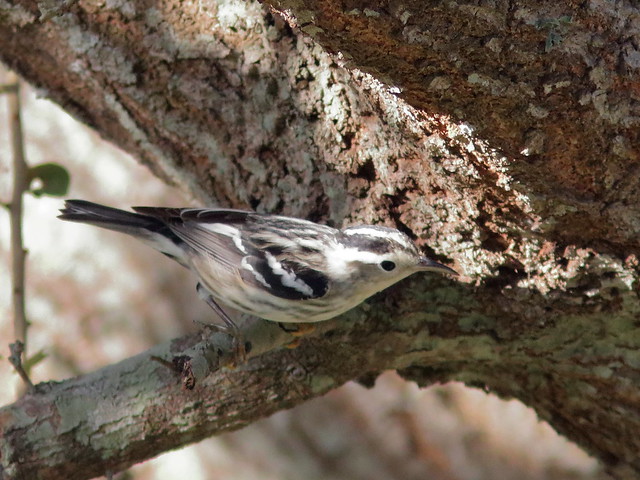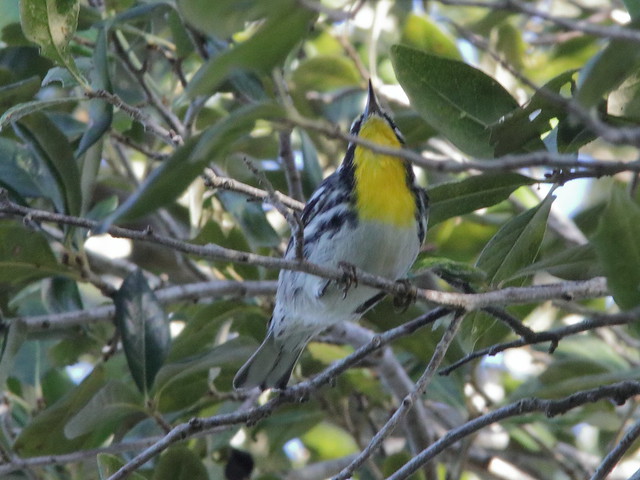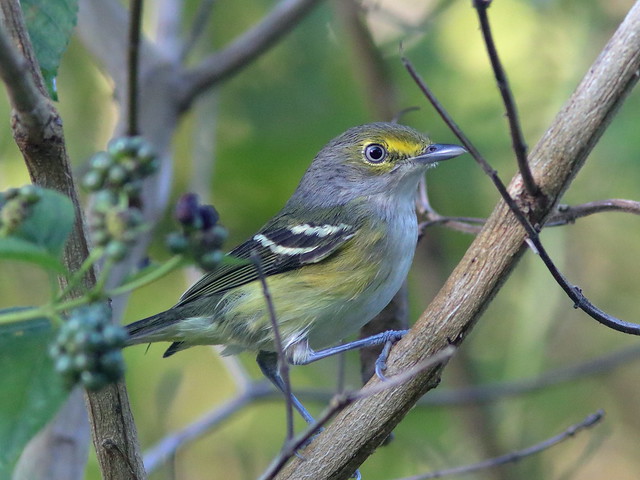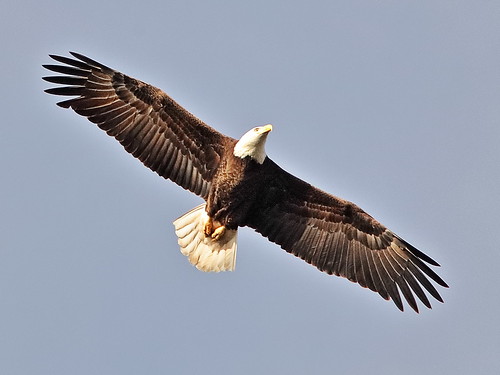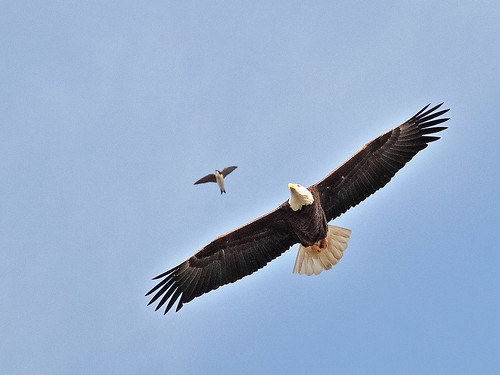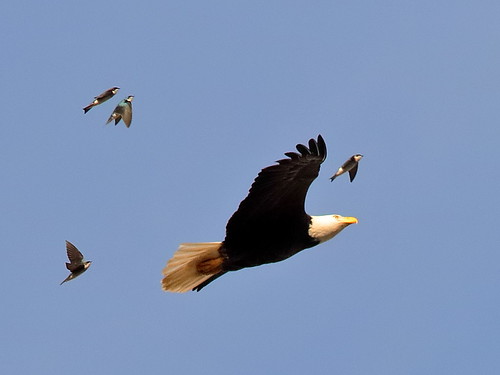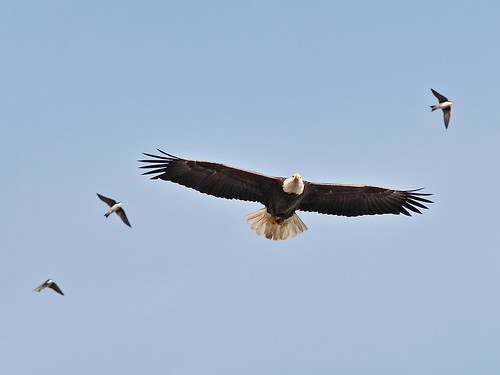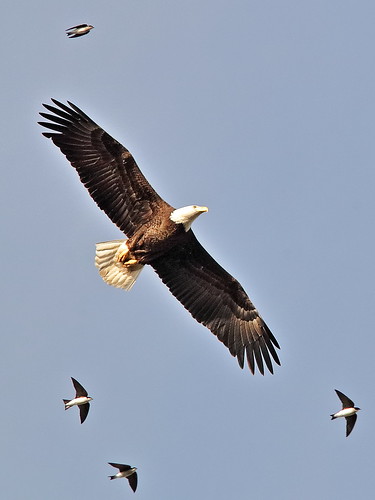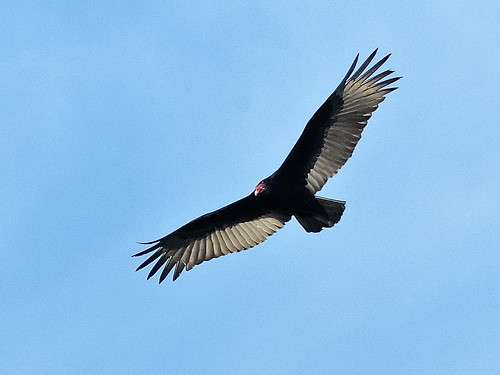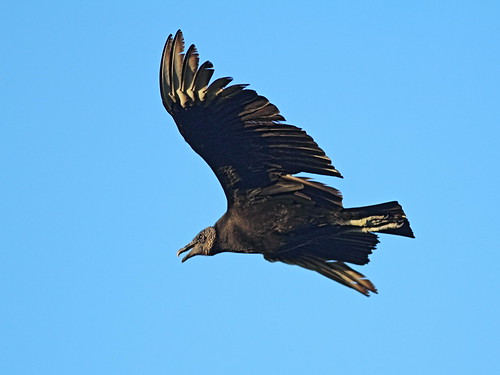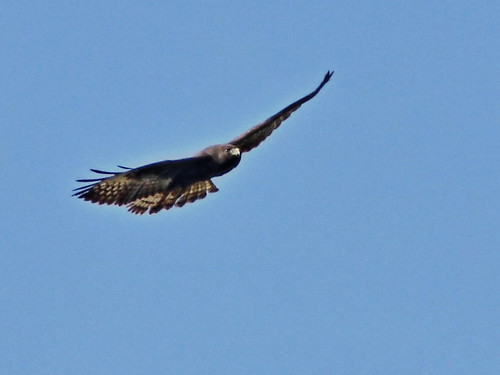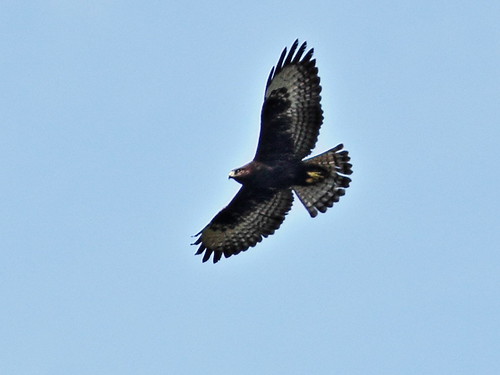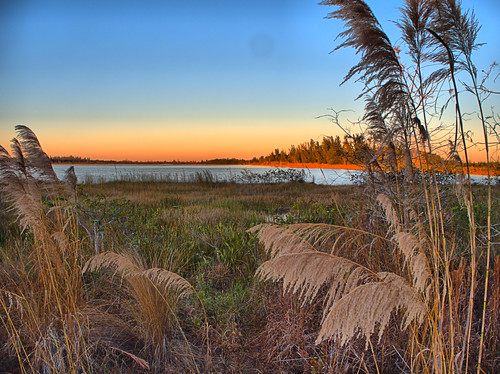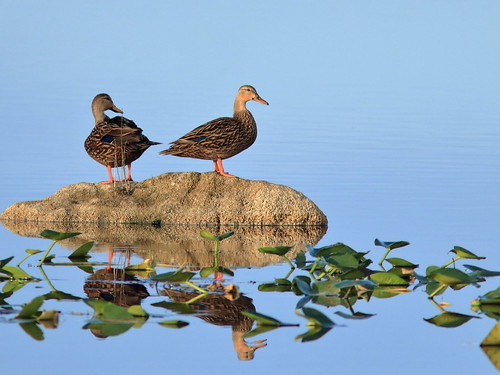As I do each month, I enjoyed looking back over my archived photos, taken three years previously, to remember how things were then and maybe get some idea of what to expect this year. I processed 494 photos in November, 2018. As usual, I searched for images which reflected favorite memes: critters of all kinds (especially birds), skies and clouds, reflections, flowers and fences, as well as scenes which speak for themselves. We spent the entire year at home in south Florida.
On November 1, our walk in the Wounded Wetlands rewarded us with an Eastern Phoebe...
...an acrobatic female Black-and-White Warbler:
The next morning, several long-legged waders foraged in a slough created by off-road vehicles next to the wet prairie. Heavy rains had caused the lake to spill over, trapping fish in the surrounding area. They included a Little Blue and Tricolored Heron as well as a Great Egret:
A Snowy Egret and Wood Stork were out of the frame:
This is a nice size comparison between the egret and the Tricolored Heron:
The egret flew up to balance on some flimsy branches:
The heron rookery was about to be demolished. It harbored a secretive Black-crowned Night-Heron...
...and a drab Yellow-crowned Night-Heron:
Before the end of the first week I saw a Yellow-throated Warbler...
...a female Blue Grosbeak in winter plumage...
...a male Northern Cardinal who had just completed molting into fresh plumage...
...a devoted pair of Black Vultures which had nested nearby for several years...
...a White-eyed Vireo...
...and Florida's State Butterfly, a Zebra heliconian on Firebush (Hamelia patens):
Although I should have been satisfied with such an auspicious start, other sightings that month included a Pileated Woodpecker...
...a female Red-bellied Woodpecker...
...Northern Mockingbird...
...female Painted Bunting...
...Gulf Fritillary on Lantana...
...Prairie Warbler...
...Blue-headed Vireo...
...White Ibises...
...immature Red-shouldered Hawk...
...and a male Scarlet Skimmer (Crocothemis servilia):
A male Bobcat strolled nonchalantly across the gravel track:
On November 24 the full Beaver Moon set over the lake:
The next morning it was quite high as the fog lifted:
There were buttermilk skies...
...brilliant reflections...
and fiery sunrises:
However, all was not good. The heron rookery was destroyed. This was the view of the rookery on November 20:
Heavy machinery was poised on a floating platform:
Two days later, hurricane debris had been removed and most of the shoreline vegetation which had hosted the heron nests had been clear-cut:
On November 28, a lone night-heron rested on a broken branch near the missing tree which had contained one of eight nests that produced numerous young birds earlier that year:
This photo, taken at a pasture next to Chapel Trail Nature Preserve, is a somber reminder that now, three years later, the Longhorn cattle and Cattle Egrets are gone and the grassland is being paved over for a parking lot to store boats and RVs:
= = = = = = = = = = = = = = =
Linking to:
Fences Around the World
Skywatch Friday
Weekend Reflections
Saturday's Critters
BirdD'Pot
Camera Critters
All Seasons
Wordless Wednesday (on Tuesday)
Natasha Musing
Our World Tuesday
Please visit the links to all these posts to see some excellent photos on display
________________________________________________


